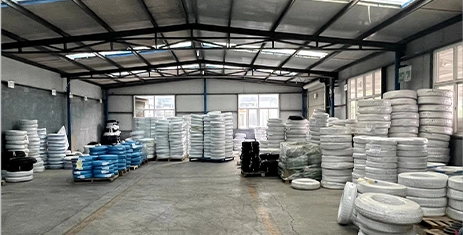Brake Hose Standards and Specifications According to SAE J1401 Guidelines for Automotive Applications
An Overview of SAE J1401 Brake Hose Specifications
Brake systems are crucial components of any vehicle, and the hoses that connect various parts of the braking system must meet specific criteria to ensure safety and reliability. One of the primary standards governing these components is the SAE J1401 specification, which provides guidelines for the performance, construction, and testing of automotive brake hoses. Understanding these specifications is essential for manufacturers, vehicle designers, and safety regulators alike.
Purpose of SAE J1401
SAE J1401 is a specification set forth by the Society of Automotive Engineers (SAE) that outlines the performance standards for brake hoses used in hydraulic brake systems for passenger cars, trucks, and buses. The primary purpose of SAE J1401 is to establish benchmarks that assure the hoses can withstand environmental forces and deliver reliable performance under various operating conditions. The standard aims to prevent hose failure that could lead to brake system malfunction, which poses significant safety risks.
Key Specifications
The SAE J1401 standard addresses several critical aspects of brake hoses, including construction, performance, and testing procedures
. Here are some of the most important specifications1. Materials Brake hoses must be made from materials that can withstand the high pressures and temperatures typically encountered in braking applications. The interior of the hose is typically constructed from a synthetic rubber compound that is resistant to the effects of hydraulic brake fluids. The reinforcement layer, often made from materials like fabric or steel, provides the structural integrity needed to oppose internal pressure without bursting.
2. Dimensions SAE J1401 specifies the dimensions and tolerances for brake hoses to ensure they fit correctly in the braking system. Consistent dimensions are crucial for compatibility with fittings and connectors, eliminating potential leaks or failure points.
sae j1401 brake hose specifications

3. Performance Tests The standard defines several performance tests to evaluate the durability and safety of the hose. These tests include pressure tests, impulse tests, and exposure to environmental conditions (UV light, ozone, temperature variations) to determine how the materials hold up over time and under stress.
4. Pressure Rating A critical aspect of the SAE J1401 standard is the pressure rating, which specifies the maximum pressure the hose can handle without risk of failure. Brake hoses must undergo rigorous testing to certify their ability to perform under high pressure, which is a common occurrence during emergency braking situations.
5. Temperature Resistance The brake hoses must also be able to withstand temperature extremes. The specification outlines the temperature range in which the hose can operate effectively without degrading, which is essential in high-performance vehicles where braking can generate significant heat.
6. Durability The hoses are subjected to various durability tests, including bend and flex tests to simulate the conditions they will encounter during regular use. This ensures that the hoses remain functional even in adverse conditions, further enhancing vehicle safety.
Importance of Compliance
Compliance with SAE J1401 is not merely a regulatory formality; it significantly impacts vehicle safety and performance. Manufacturers who adhere to these standards demonstrate their commitment to producing safe and reliable components, ultimately protecting end-users and reducing the risk of accidents caused by brake failure. Furthermore, vehicle manufacturers typically require compliance with these standards to meet safety regulations and secure necessary certifications from regulatory bodies.
Conclusion
Understanding and adhering to SAE J1401 brake hose specifications is essential for manufacturers and engineers involved in the automotive industry. These standards help ensure that brake hoses perform reliably under pressure and extreme conditions, contributing significantly to vehicular safety. As technology advances and vehicles become more sophisticated, continued vigilance towards these specifications will be critical in maintaining the integrity of braking systems and ensuring public safety on the road. Compliance not only fosters trust among consumers but also plays a crucial role in reducing the likelihood of brake-related incidents, underscoring the importance of these standards in automotive engineering.
-
Ultimate Spiral Protection for Hoses & CablesNewsJun.26,2025
-
The Ultimate Quick-Connect Solutions for Every NeedNewsJun.26,2025
-
SAE J1401 Brake Hose: Reliable Choice for Safe BrakingNewsJun.26,2025
-
Reliable J2064 A/C Hoses for Real-World Cooling NeedsNewsJun.26,2025
-
Heavy-Duty Sewer Jetting Hoses Built to LastNewsJun.26,2025
-
Fix Power Steering Tube Leaks Fast – Durable & Affordable SolutionNewsJun.26,2025

